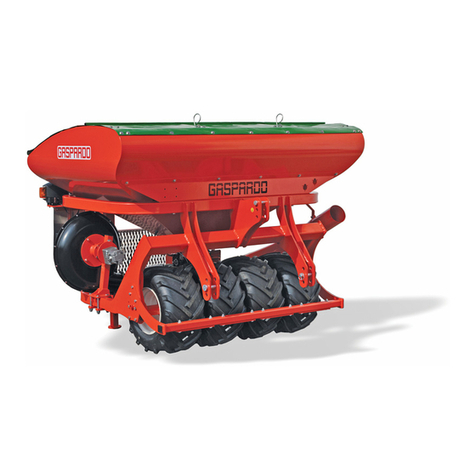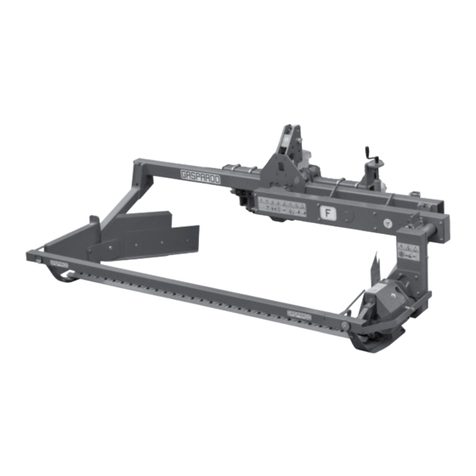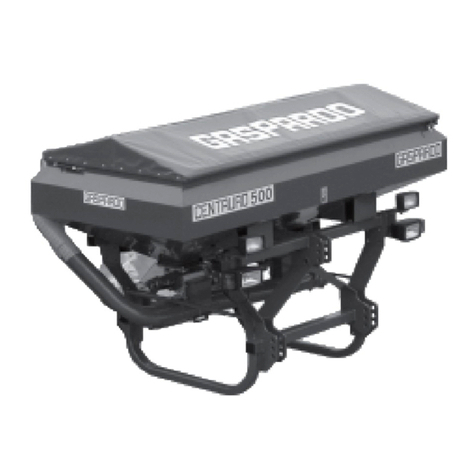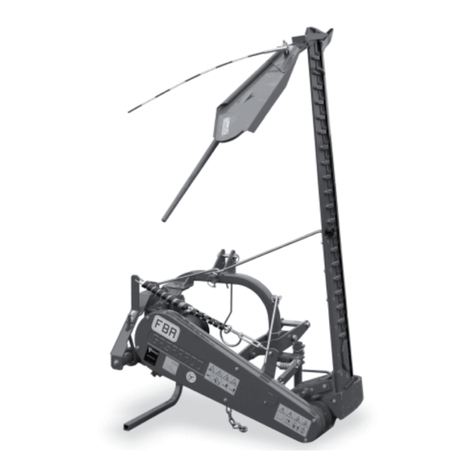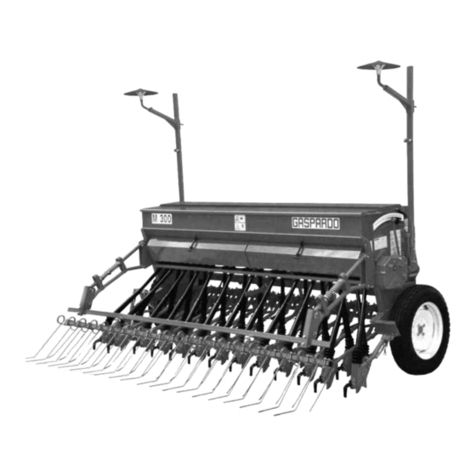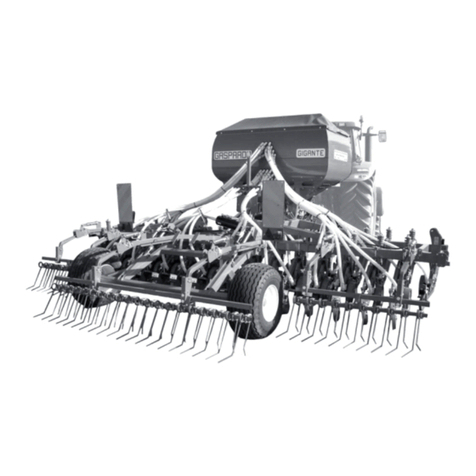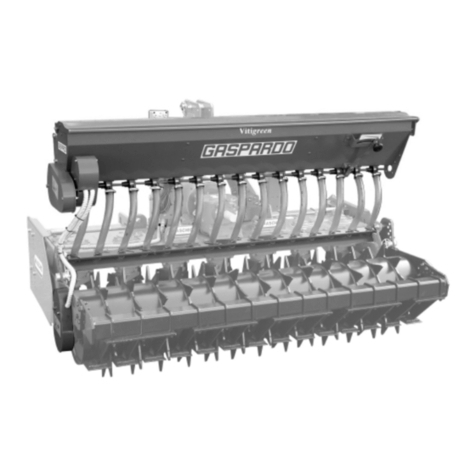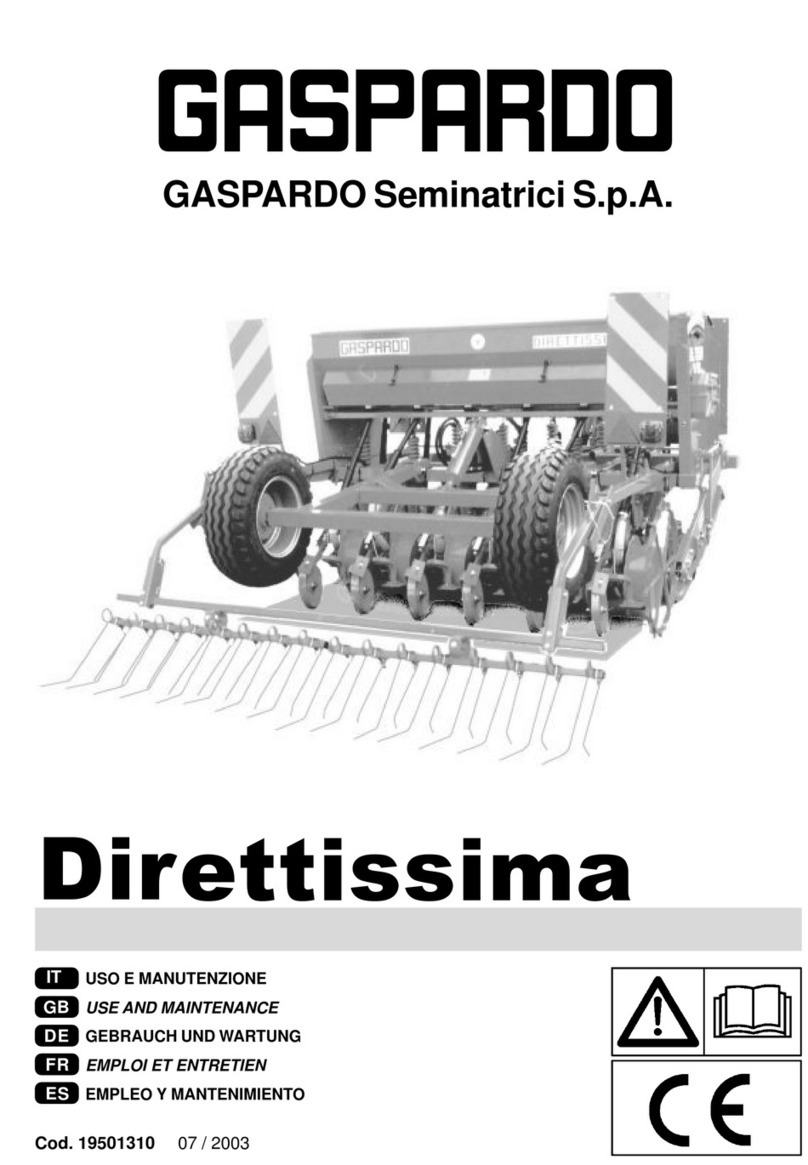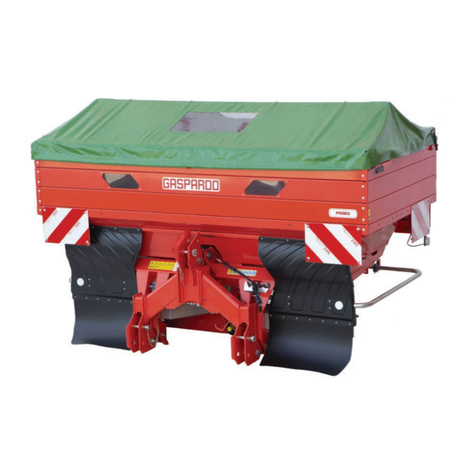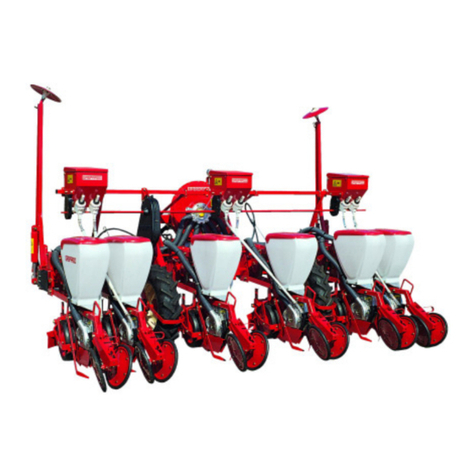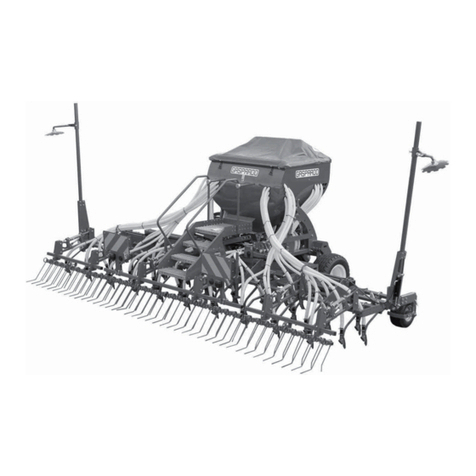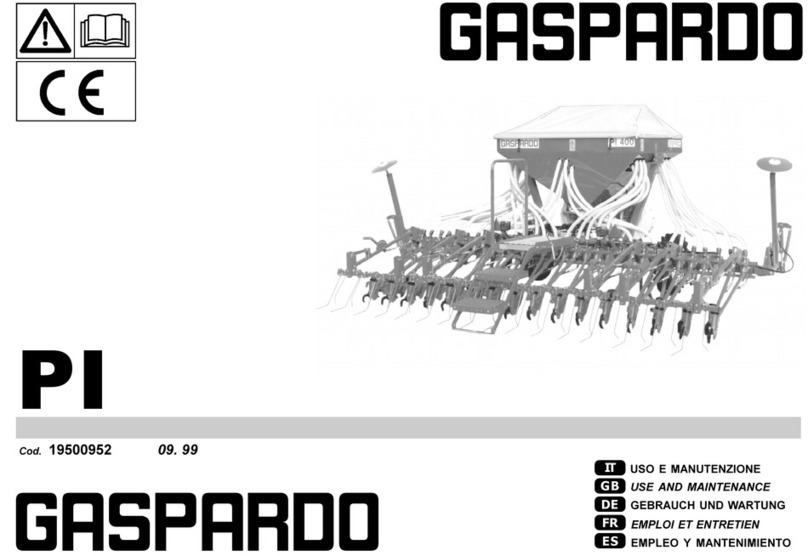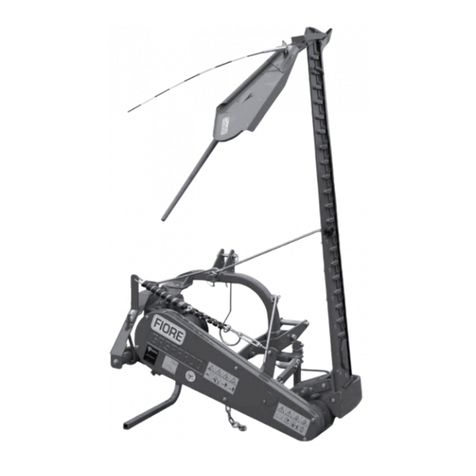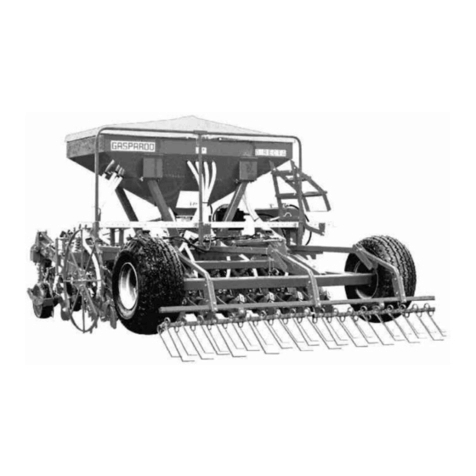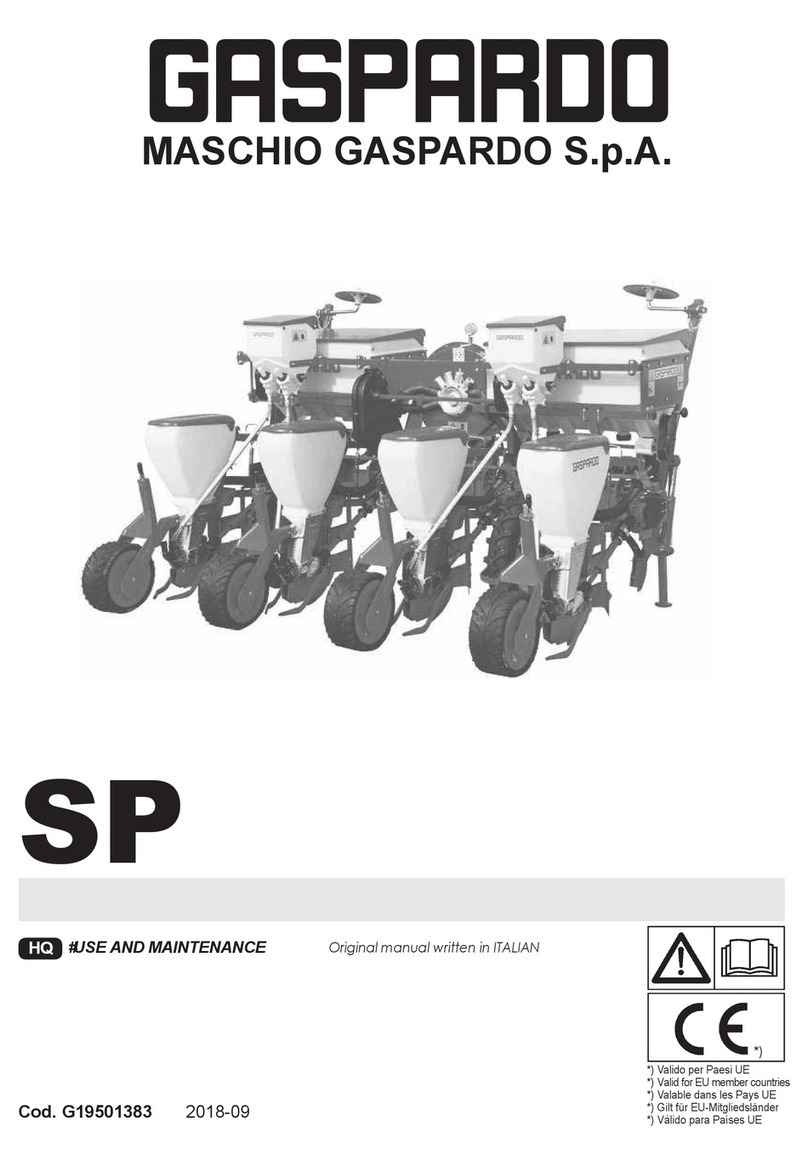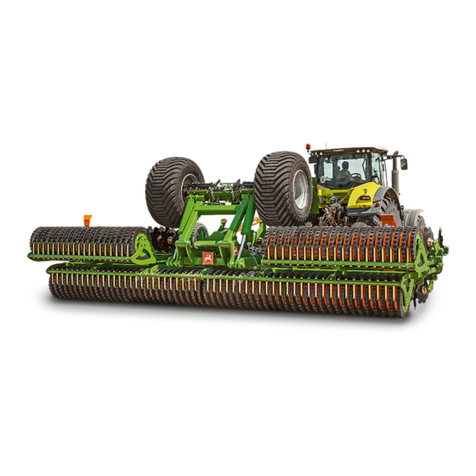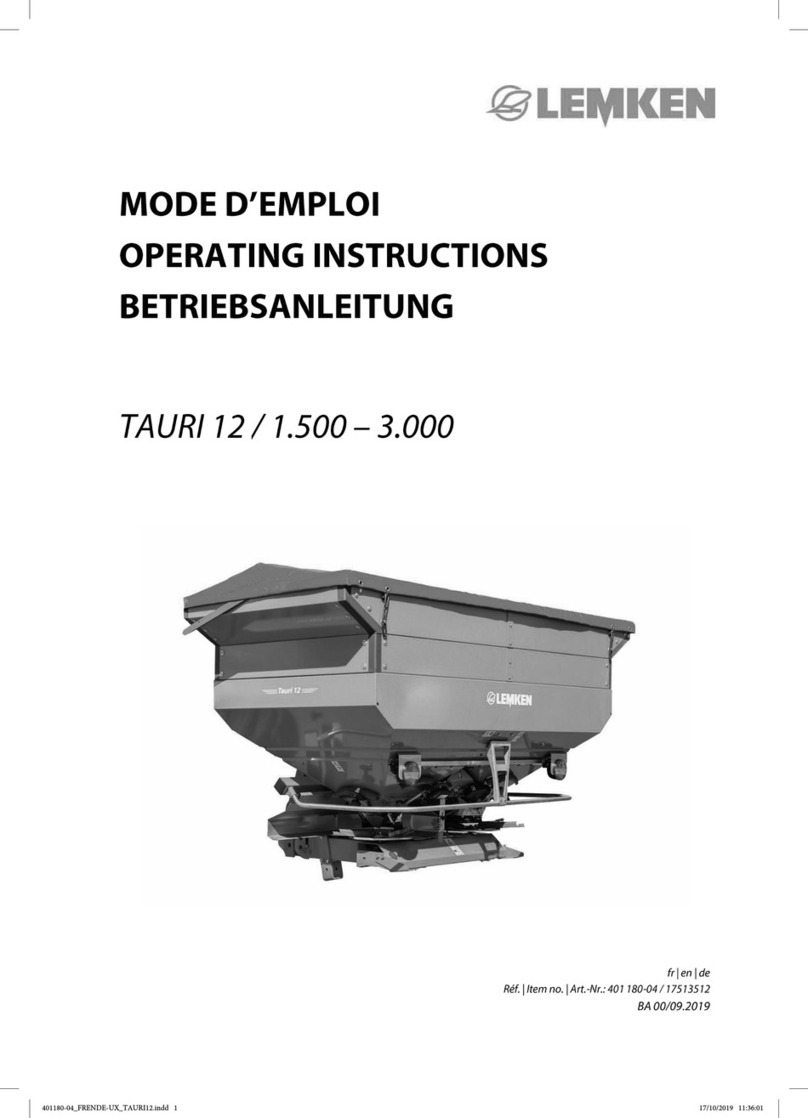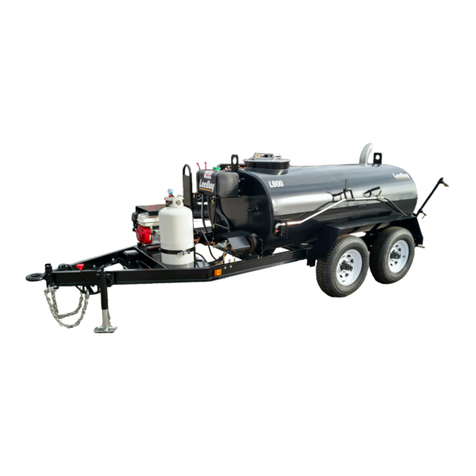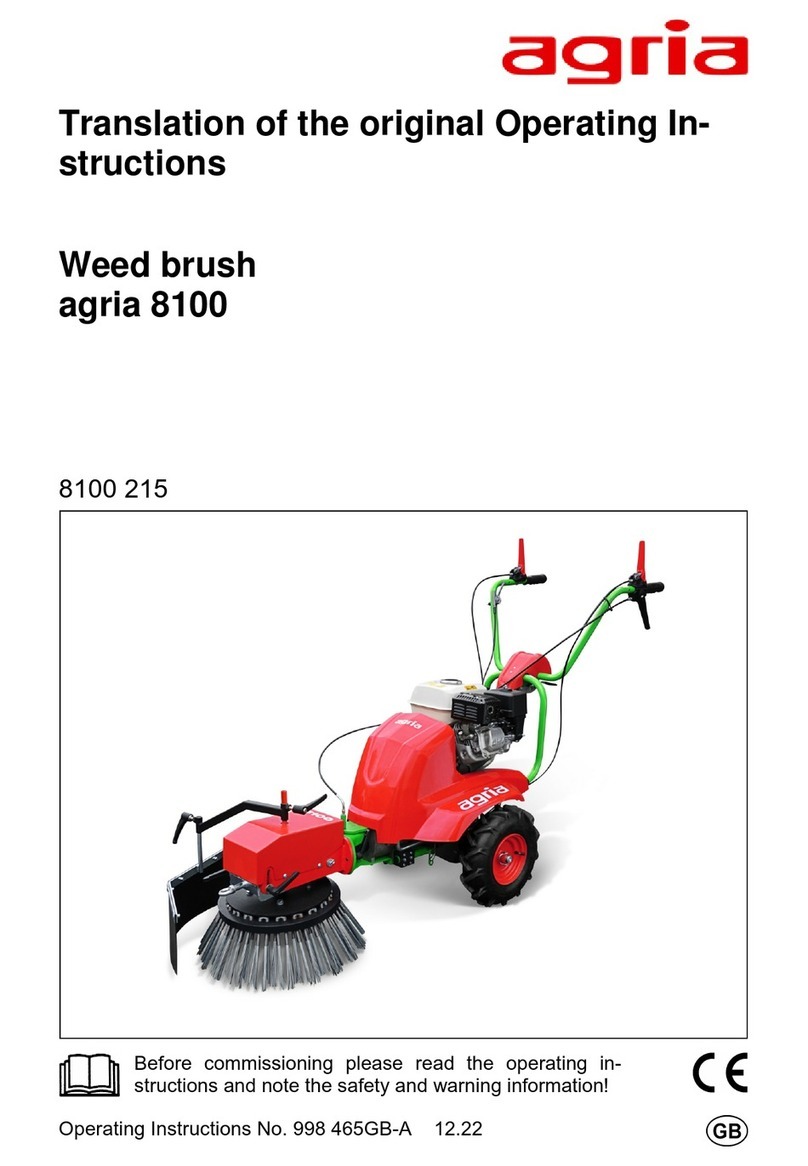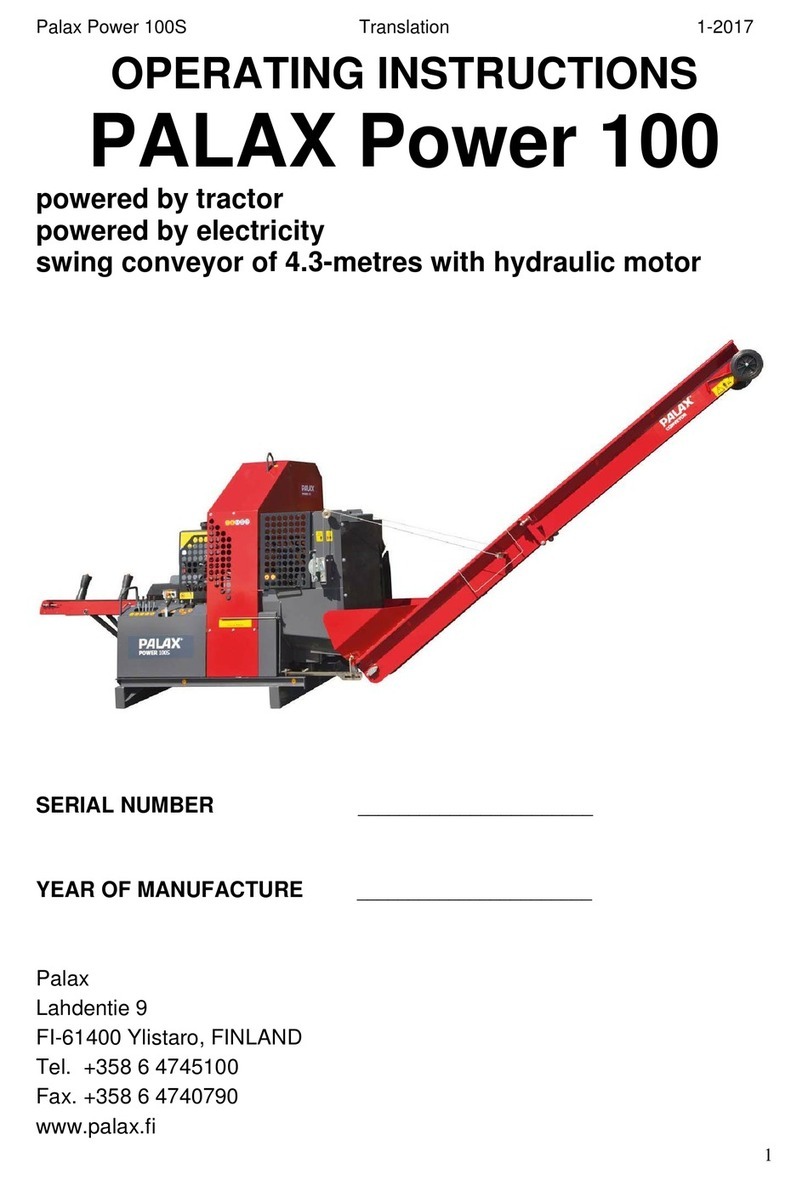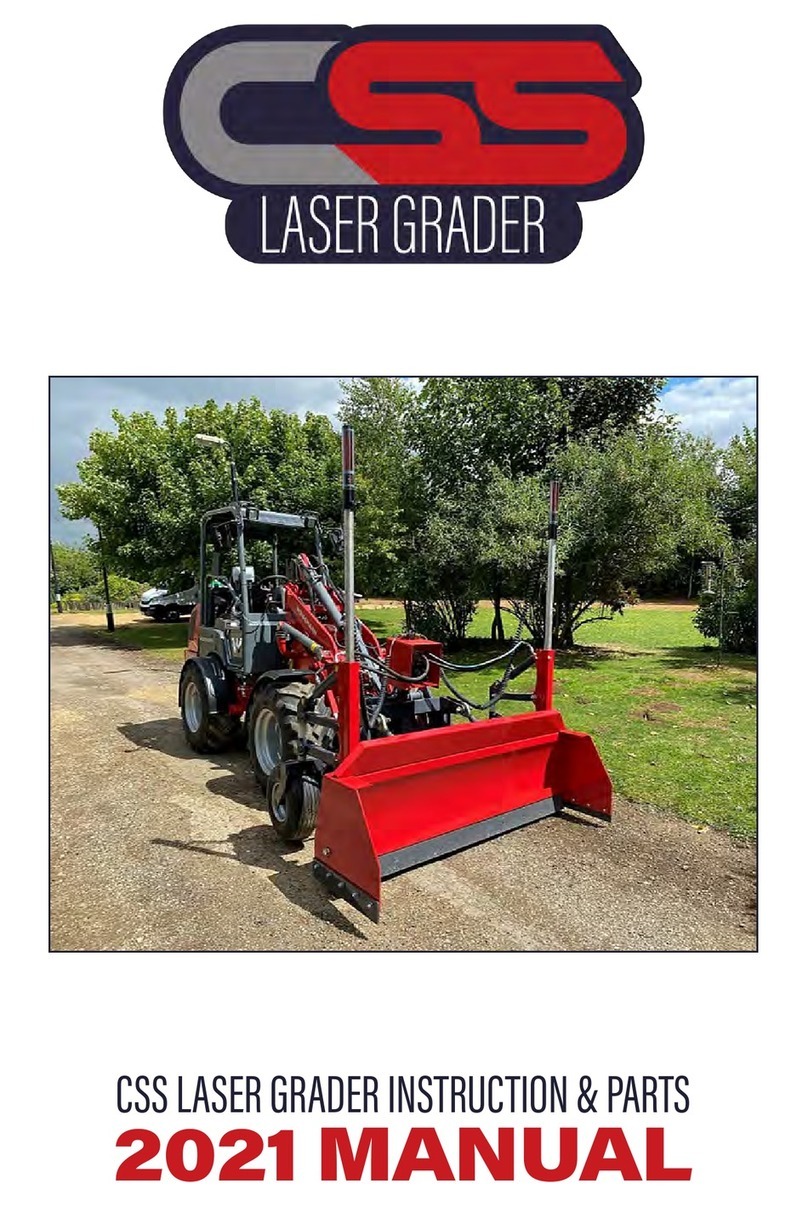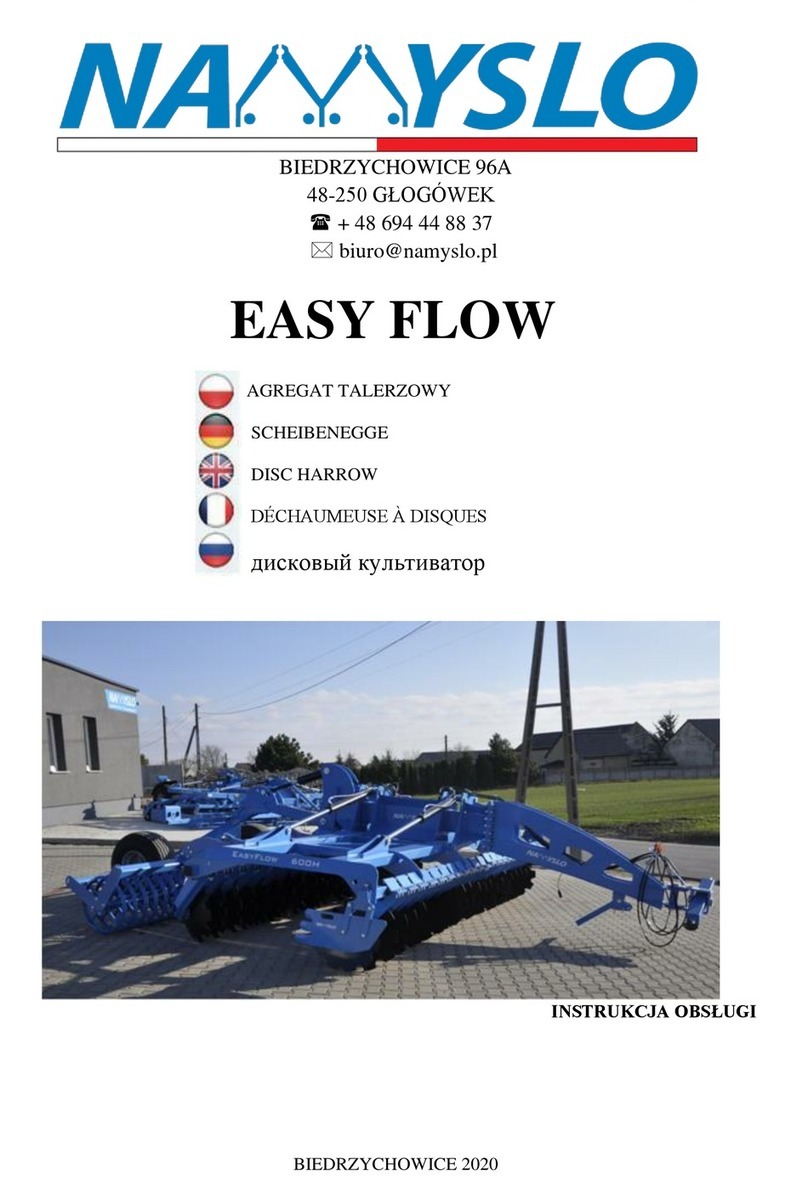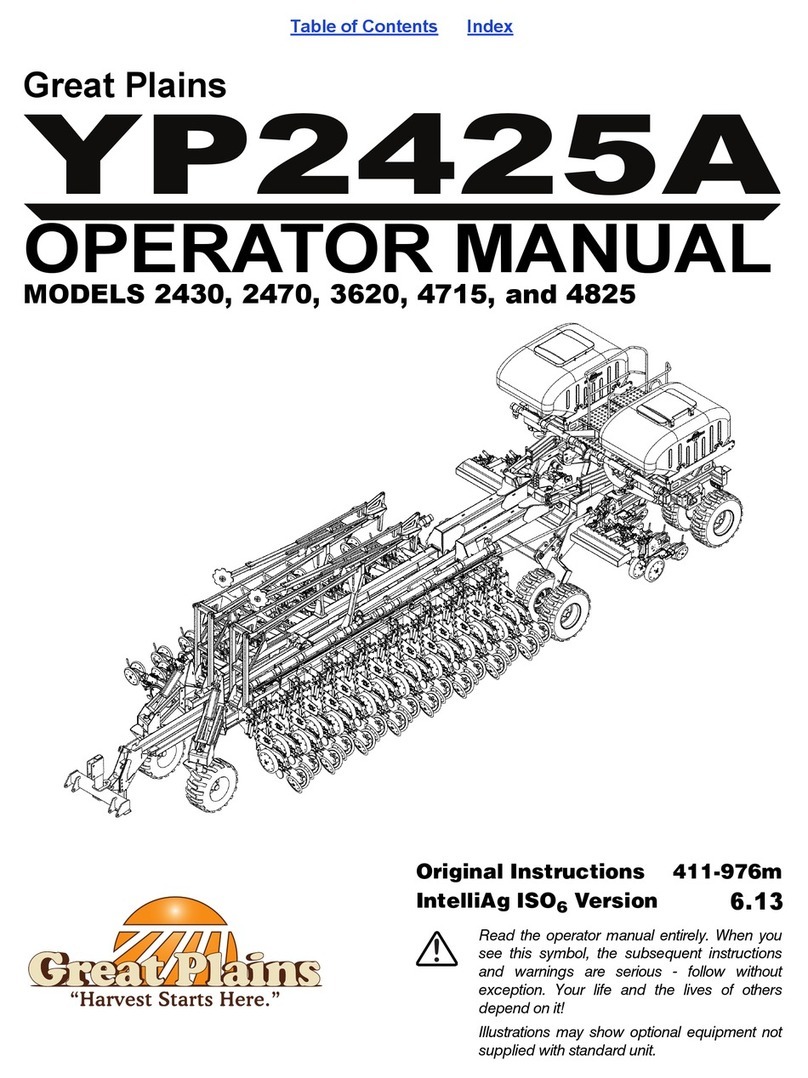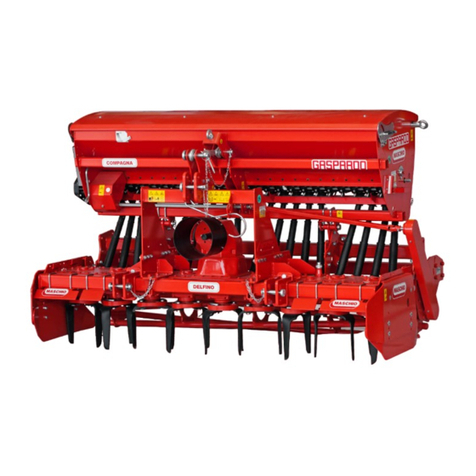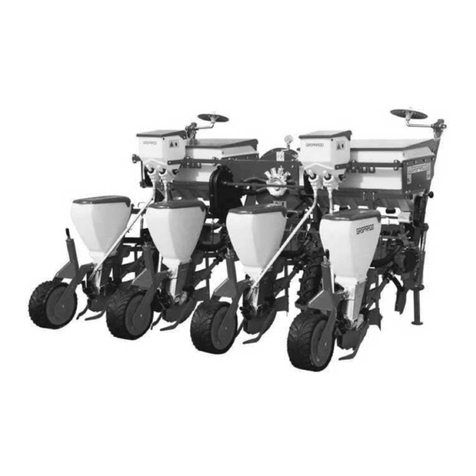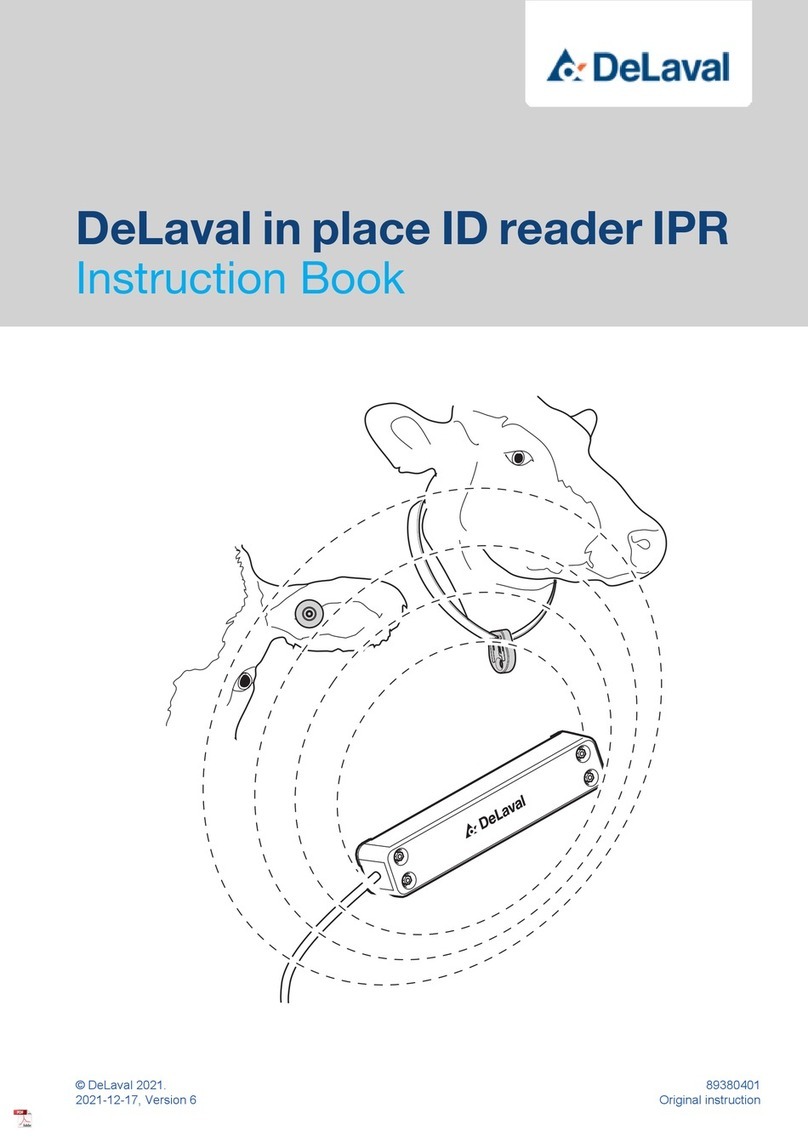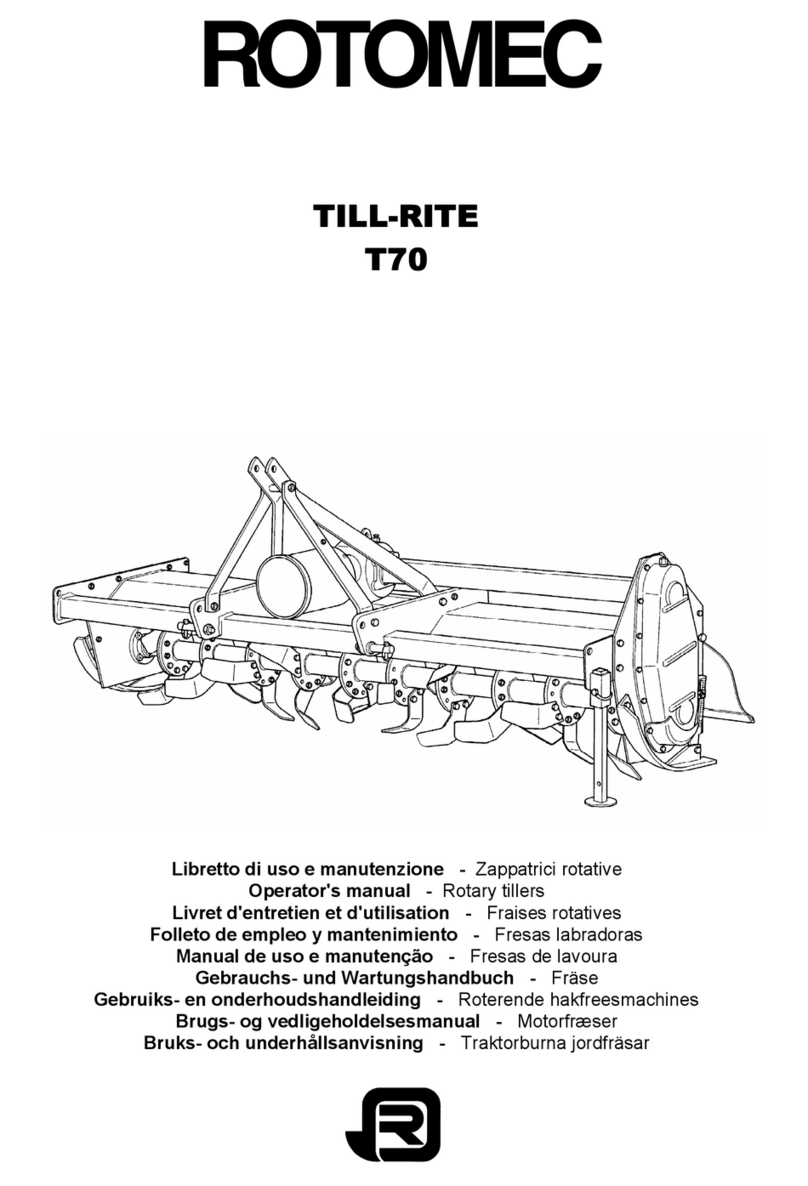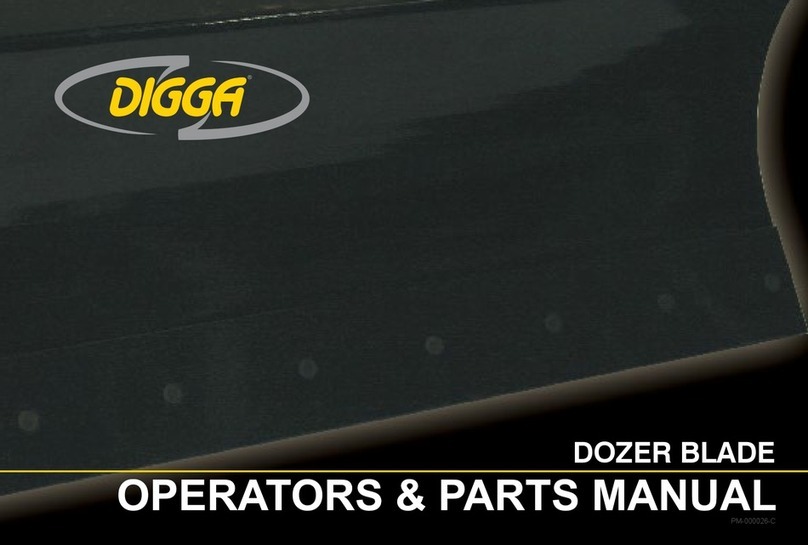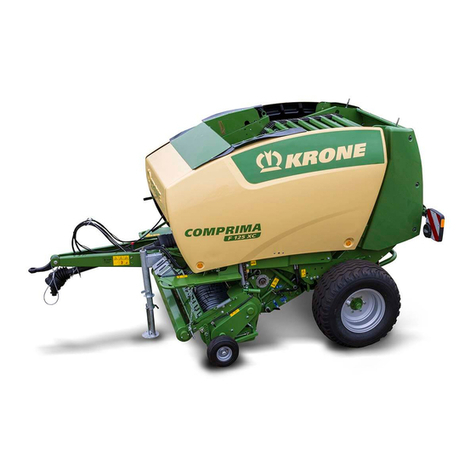
FRANÇAIS
TABLESDEMATIERES
3
g
cod. G19502171
ESPAÑOL
INDICE
ROMANA
CUPRINS
1.0 Introduction ................................. 101
1.1 Généralités ..................................... 101
1.2 Garantie .......................................... 104
1.2.1 Expiration de la garantie ................ 104
1.3 Identification.................................... 104
2.0 Indications générales de
sécurité ........................................ 105
2.1 Signaux de securite d'indication .... 105
2.1.1 Signaux de recommandation.......... 105
2.1.2 Signaux de danger ......................... 105
2.1.3 Signaux de indication ..................... 105
2.2 Normes de securite et de prevention
des accidents ................................. 106
3.0 Description de la machine........ 109
3.1 Donnees techniques ...................... 110
3.2 Movimentation ................................. 110
3.3 Dessin global .................................. 111
3.4 Doseur ............................................ 112
3.5 Installation d'actionnement de la
soufflante ....................................... 116
3.5.1 Installation dependante................... 116
3.5.2 Installation independante ................ 117
3.5.3 Réglage de la pression................... 118
3.5.4 Refroidissement huile ..................... 118
4.0 Normes d'emploi........................ 119
4.1 Attelage au tracteur ....................... 119
4.1.1 Equipementanterieur...................... 119
4.1.2 Configuration graines ..................... 120
4.1.3 Raccordement central .................... 120
4.1.4 Installationdecommandehydeaulique . 121
4.2 Stabilite pendant le transport machine-
tracteur ........................................... 122
4.3 Fermeture et l'ouverture de
l'equipement arriere ........................ 122
4.4 Transport ........................................ 123
4.5 Avant de commencer le travail ...... 124
4.6 Essai de dosage ............................. 124
4.6.1 Quantitemaximumdeproduitdistribue . 125
4.7 Debut du travail............................... 126
4.7.1 Preparation pour le distribution ...... 126
4.8 Durant le travail............................... 127
4.9 Fin de travail ................................... 127
4.9.1 Rideau de vidange.......................... 127
5.0 Entretien ....................................... 128
5.1 Plan d'entretien - tableau récapitulatif.. 129
5.2 Conseils en cas d'inconvenients ... 130
6.0 Demantelement et elimination. 130
Confotmity declaratione ...................... 197
1.0 Premisa ........................................ 133
1.1 Generalidades ................................ 133
1.2 Garantía .......................................... 136
1.2.1 Vencimiento de la garantía ............. 136
1.3 Identificación................................... 136
2.0 Indicaciones generales de
seguridad ...................................... 137
2.1 Señales de seguridad y de indicación 137
2.1.1 Señales de advertencia ................. 137
2.1.2 Señales de peligro.......................... 137
2.1.3 Señales de peligro.......................... 137
2.2 Normas de seguridad y prevención
contra los accidentes..................... 138
3.0 Descripción de la màquina ...... 141
3.1 Datos tecnicos................................ 142
3.2 Manipulación ................................... 142
3.3 Diseño general................................ 143
3.4 Dosificador ..................................... 144
3.5 Accionamiento hidráulico del soplador . 148
3.5.1 Instalación dependiente.................. 148
3.5.2 Instalación independiente ............... 149
3.5.3 Regolación de la presion ................ 150
3.5.4 Refrigeración del aceite ................. 150
4.0 Normas de uso ........................... 151
4.1 Aplicación al tractor ....................... 151
4.1.1 Equipo delantero............................. 151
4.1.2 Equipamientoparasemilla .............. 152
4.1.3 Conexión central ............................ 152
4.1.4 Instalaciones hidráulicas ................ 153
4.2 Estabilidad durante el transporte de la
màquina -tractor ............................. 154
4.3 Cierre y la apertura del equipo
posterior ......................................... 154
4.4 Transporte ...................................... 155
4.5 Antes de iniciar el trabajo .............. 156
4.6 Prueba de dosificación................... 156
4.6.1 Cantidad máxima de producto
distribuido ....................................... 157
4.7 Inicio del trabajo .............................. 158
4.7.1 Preparativos para el trabajo........... 158
4.8 Durante el trabajo ........................... 159
4.9 Final del trabajo............................... 159
4.9.1 Descarga de las semillas desde
la tolva ............................................ 159
5.0 Mantenimiento............................ 160
5.1 Plan de mantenimiento - tabla de
resumen.......................................... 161
5.2 Sugerencias en caso de
inconvenientes ............................... 162
6.0 Desguace y eliminación ............ 162
Declaración de conformidad ............... 197
1.0 Introducere.................................. 165
1.1 Generalitati ...................................... 165
1.2 Garantia .......................................... 168
1.2.1 Expirarea garantiei ......................... 168
1.3 Identificarea utilajului ...................... 168
2.0 Indicatii generale de siguranta. 169
2.1 Adezivi de siguranta si indicare..... 169
2.1.1 Adezivi de avertizare ..................... 169
2.1.2 Adezivi de pericol........................... 169
2.1.3 Adezivi de indicare......................... 169
2.2 Norme de siguranta si prevenire a
accidentelor .................................... 170
3.0 Descrierea masinii ..................... 173
3.1 Date tehnice.................................... 174
3.2 Manipulare ...................................... 174
3.3 Desen de ansamblu........................ 175
3.4 Dozator ........................................... 176
3.5 Actionarea oleodinamica a suflantei180
3.5.1 Instalatie dependenta ..................... 180
3.5.2 Instalatie independenta................... 181
3.5.3 Reglarea suflarii ............................. 182
3.5.4 Racireauleiului................................ 182
4.0 Norme de utilizare...................... 183
4.1 Aplicarea la tractor ......................... 183
4.1.1 Utilajulanterior ................................ 183
4.1.2 Utilajul posterior .............................. 184
4.1.3 Cuplare centrala ............................. 184
4.1.4 Cuplare instalatie oleodinamica ...... 185
4.2 Verificarea capacitatii de ridicare si
stabilitatea tractorului la care este
aplicata masina ............................... 186
4.3 Inchiderea si deschiderea utilajului
posterior ......................................... 186
4.4 Transportul pe drumurile publice.... 187
4.5 Inainte de inceperea lucrului .......... 188
4.6 Proba de dozare............................. 188
4.6.1 Cantitatea max. de produs distribuit 189
4.7 Inceperea lucrului ........................... 190
4.7.1 Pregatiri pentru distributie .............. 190
4.8 Intimpullucrului............................... 191
4.9 Sfarsitul lucrului .............................. 191
4.9.1 Descarcarea bazinului ................... 191
5.0 Intretinere .................................... 192
5.1 Plan de intretinere ........................... 193
5.2 Sugestii in caz de inconveniente .... 194
6.0 Demolare si lichidare................. 194
Declaratie de conformitate.................. 197




















